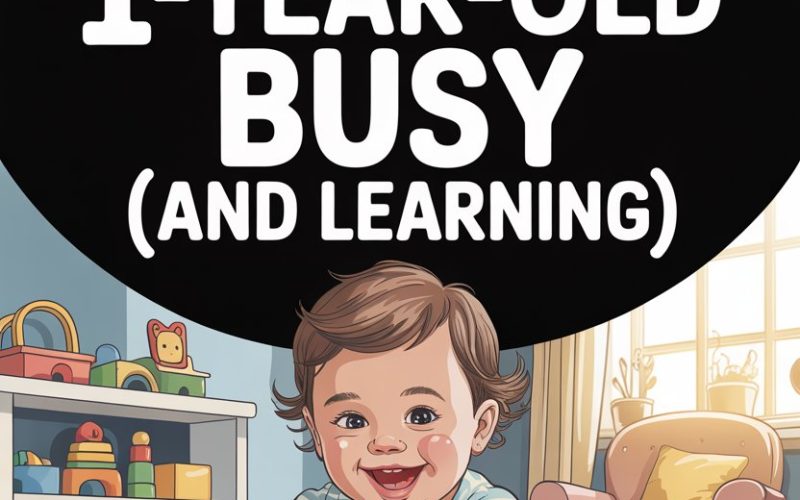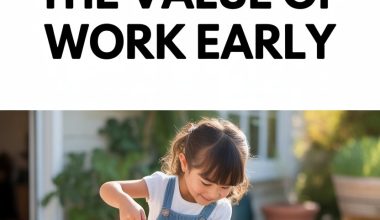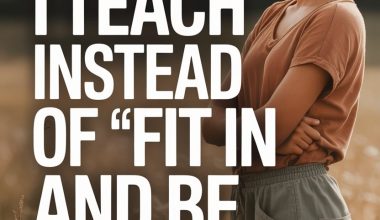You just put your coffee in the fridge and your phone in the laundry basket. Welcome to parenting a one‑year‑old.
At this age, your mini explorer is ready to run the place, but could also passionately remove every item from the recycling bin and eat the last dog biscuit. You want to keep them busy—and if those activities sneak in a little learning, all the better.
Here are 15 parent‑tested ways to do just that, minus the stress and existential dread.
1. Messy Play with Edible Finger Paints
Why is the kitchen wall now a canvas? Because creativity—and gravity—calls. Mix up some instant “paint” with plain Greek yogurt and a dash of natural food colouring or puréed fruit.
Slap a sheet of paper on the high‑chair tray, strip your little one to their nappy, and let them go wild. Besides being taste‑safe, this sensory activity introduces colours, textures, and fine motor skills (and possibly a new yogurt hair mask).
2. Treasure Basket Magic
A basket, box, or even a shoebox filled with age‑appropriate odds and ends (think wooden spoons, fabric scraps, silicone muffin cups, a soft hairbrush) can buy you actual minutes to breathe.
Babies this age love exploring different shapes and textures, and this open‑ended play is recommended by early‑years experts for encouraging curiosity and problem‑solving.
Rotate contents weekly to keep things fresh—as fresh as week‑old rice cakes, anyway.
3. Water Play Without the Bath
Grab a baking tray, fill it with an inch of water, and toss in some floating toys, plastic cups, or even orange slices. Pop a towel underneath, park your child beside it, and watch them splash away.
Water play develops hand‑eye coordination and introduces basic science concepts like volume, cause and effect, and “Why are my socks wet again, Mum?”
4. Dance Party for Developing Brains
Research shows that dancing boosts coordination, rhythm, and language skills—even if it’s just swaying to the music of the washing machine’s final spin. Put on some tunes, scoop up your wobbly partner, and groove around the living room.
Bonus: You’ll burn off that leftover packet of crisps from lunch.
5. Stacking and Knocking Down Towers
Blocks, stacking cups, or even plastic containers become the world’s most thrilling toys when construction and demolition are on the menu.
Stacking helps develop spatial reasoning and fine motor skills, while gleefully knocking it all over builds a sense of cause and effect (and, perhaps, an evil laugh).
6. Nature Discovery Walks
Pop your little one in the buggy or let them toddle beside you, and head outdoors for a “nature hunt.” Collect leaves, twigs, or small stones, and chat about each find.
Even in the city, there’s plenty to see: buses, dogs, pigeons plotting world domination. Nature walks encourage vocabulary, mindfulness, and, occasionally, spontaneous naps.
7. Peekaboo with Everyday Objects
Peekaboo’s not just a game—it’s a cognitive milestone. Use a muslin cloth, a cushion, or a sibling’s jumper for the big reveal.
Grasping object permanence (that things exist even when they can’t see them) is a huge brain leap for your one‑year‑old. Also, your performance of “WHERE’S DADDY?!” deserves an Olivier Award.
8. Reading—Yes, Even for One Minute
Babies love books with textures, flaps, mirrors, or just bright pictures. Storytime builds language skills, even if your child’s preferred method is chewing the book’s corner.
There’s solid evidence from the American Academy of Pediatrics that early exposure to books fosters pre‑literacy skills—even if all you manage is one page before “accidentally” eating it.
9. Sensory Bags for Squishy Fun
Fill a resealable sandwich bag with hair gel, food colouring, and some small toys or sequins (ensure it’s sealed firmly—duct tape works wonders). Tape it to the high‑chair tray and watch your tiny scientist squish, poke, and pat away.
Sensory bags are great for tactile exploration, with zero clean‑up (unless your little one’s a future safecracker).
10. Pots, Pans, and a Wooden Spoon Symphony
Kitchen percussion sessions never get old. Give your child a couple of pots, a non‑breakable bowl, and a wooden spoon, and let them make “music.”
Besides the sheer joy of banging things together, this activity develops rhythm, coordination, and the early foundations of musical appreciation—or at least a healthy respect for earplugs.
11. Cardboard Box Adventures
The cardboard box might be the world’s most versatile toy. Open it up for crawling, pop some holes for peeking, or offer crayons for decorating.
Child‑development specialists say imaginative play with everyday objects helps children build creativity and problem‑solving skills. Plus, it’s free—unless you just bought the world’s largest flat‑pack wardrobe.
12. Mirror Time for Self‑Discovery
Place a baby‑safe mirror near your child during tummy time or play. Many little ones find their reflection endlessly fascinating, and it helps promote self‑awareness and visual tracking.
Prepare for a lot of face‑smooshing and some very earnest conversations with “the other baby.”
13. Sorting Games with Socks or Toys
Grab a pile of (clean) socks, plastic blocks, or coloured balls. Encourage your child to put them in different containers or baskets.
Sorting fosters categorisation skills and early maths concepts, and can even help keep the sock monster at bay. For now, anyway.
14. Bubble Mania
A bottle of bubbles is pure magic. Blow them indoors or out, and watch your one‑year‑old’s eyes light up as they chase, pop, and giggle at every floating orb.
According to child‑development specialists, bubble play supports visual tracking and gross‑motor skills—plus those all‑important belly laughs.
15. Snack Time as a Learning Activity
Turn snack time into a mini lesson. Offer a plate with a few colourful finger foods like blueberries, banana slices, or shredded cheese.
Practice naming colours and textures together, and let your child feed themselves (with supervision, obviously). Besides building language and independence, self‑feeding hones fine‑motor skills—plus, you might even get a bite in yourself.
Surviving (and Thriving) Through the Toddler Tornado
Life with a one‑year‑old is a mixture of delight, chaos, and mystery stains. Each new “busy” activity is a chance for your child to learn about the world—and for you to savour the small victories (“Look, they’re playing independently for… three minutes!”).
No need for a Pinterest‑perfect playroom or an early‑childhood PhD—just a willingness to follow your child’s lead, improvise, and laugh when you find socks in the toaster.
Every game, splash, and squishy mess is another step towards raising a curious, confident little learner (who might, if you’re lucky, sleep a full night before their second birthday).
And if all else fails? There’s always CBeebies. Your secret’s safe with me.





